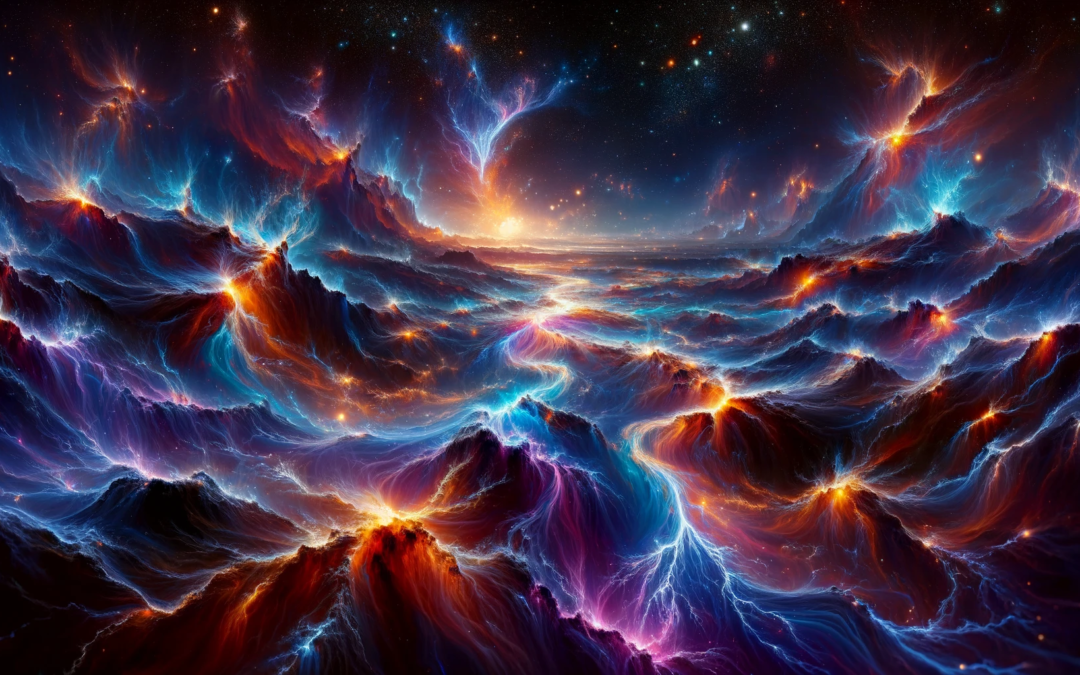The Foundations of Plasma Cosmogony
In the vast arena of cosmological theories, Plasma Cosmogony presents a distinctive perspective on the universe’s formation and evolution. This theory, while less mainstream than the Big Bang, offers an intriguing alternative that hinges on the primordial role of plasma, the fourth state of matter. Plasma Cosmogony not only challenges conventional astrophysical models but also invites us to broaden our understanding of cosmic processes.
Plasma Cosmogony is rooted in the concept that the universe is predominantly composed of plasma, an ionized gas with unique electromagnetic properties, distinct from solid, liquid, or gas. This theory emerged in the mid-20th century, championed by Nobel laureate Hannes Alfvén, who proposed that electromagnetic forces in plasma play a crucial role in shaping cosmic structures and dynamics.
Key Tenets of Plasma Cosmogony
Electromagnetic Forces in Cosmic Evolution: Plasma Cosmogony posits that electromagnetic forces are as significant as gravity in the formation and evolution of cosmic structures. In this view, plasma’s unique properties, such as filamentation and the ability to carry electric currents, are fundamental in forming galaxies, stars, and other celestial objects.
Critique of the Big Bang Model: Advocates of Plasma Cosmogony often question the Big Bang Theory, arguing that it does not adequately account for large-scale cosmic structures and electromagnetic phenomena observed in space. Instead, they propose that the universe has always existed in a steady state, continually shaped by plasma dynamics.
Galactic Formation and Evolution: In Plasma Cosmogony, galaxies form through the interaction of intergalactic plasma currents. These currents, influenced by magnetic fields, create filamentary structures that condense into stars and galaxies, offering a different mechanism from the traditional gravitational collapse model.
Implications for Cosmic Phenomena: This theory provides alternative explanations for various cosmic phenomena, such as the formation of quasars, the large-scale structure of the universe, and the cosmic microwave background radiation, typically attributed to the Big Bang.
Challenges and Criticisms
Plasma Cosmogony, while fascinating, faces significant challenges and criticisms from the mainstream scientific community. Critics argue that the theory lacks comprehensive mathematical models and predictive power comparable to the Big Bang Theory. Moreover, the theory’s ability to explain the cosmic microwave background and the abundance of light elements (predicted by Big Bang nucleosynthesis) remains contentious.
Ethical and Philosophical Dimensions
The exploration of Plasma Cosmogony invites us to reflect on the nature of scientific inquiry and the importance of considering alternative perspectives in our quest to understand the universe. It challenges the established paradigms and encourages open-mindedness and critical thinking in scientific endeavors.
Engaging Diverse Audiences
To engage a wide range of audiences, from AI experts to laypersons, in understanding Plasma Cosmogony, a multifaceted approach is needed. Interactive multimedia presentations, simplified models and simulations, and thought-provoking discussions can help demystify the theory’s complex concepts. Additionally, educational content that contextualizes Plasma Cosmogony within the broader history of cosmological thought can provide a comprehensive understanding.
The Role of Visual and Multimedia Elements
Given the abstract and often counterintuitive nature of Plasma Cosmogony, visual aids such as diagrams, animations, and simulations play a crucial role. They can illustrate how plasma dynamics differ from gravitational models, helping audiences visualize and grasp these complex ideas.
Conclusion: A Universe of Exploration
In conclusion, Plasma Cosmogony represents a bold, alternative view of the cosmos, reminding us of the richness and diversity in scientific thought. While it may not currently hold the same level of acceptance as the Big Bang Theory, its unique perspective enriches our cosmic discourse, inviting us to continuously explore and question our understanding of the universe’s mysteries.










